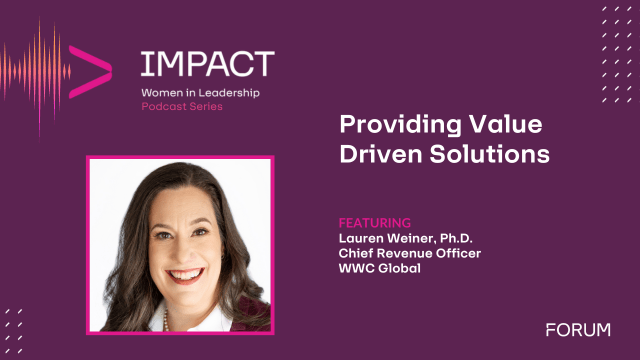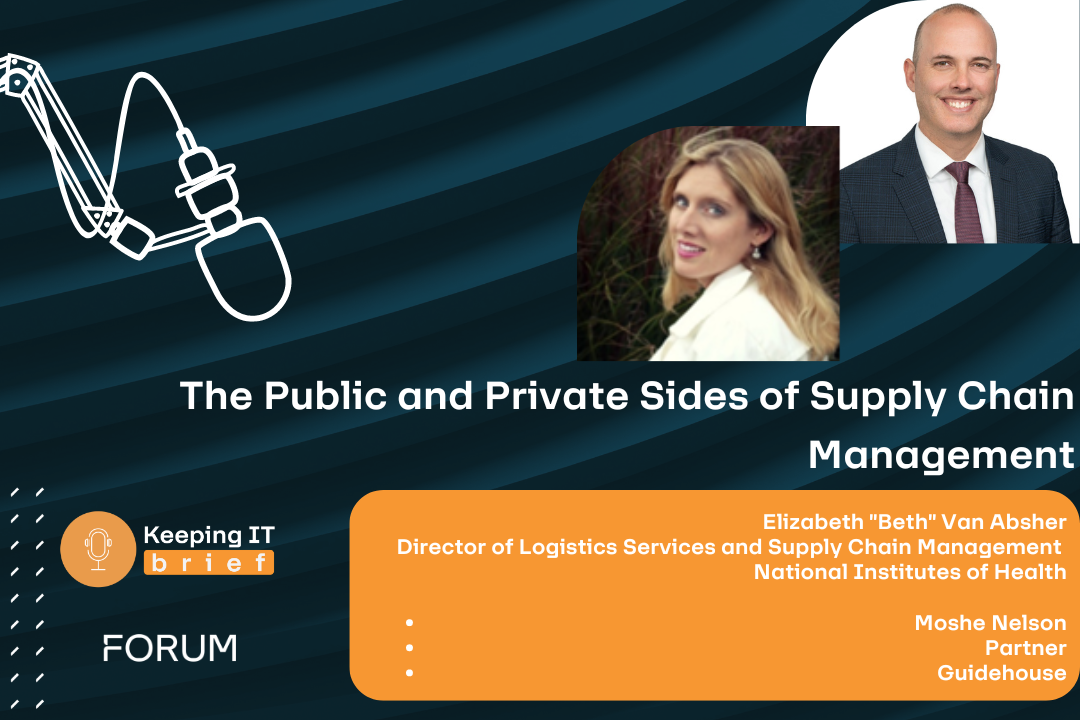This interview with Mark Forman, Executive Vice President at Dynamic Integrated Services and former Administrator of the Office of E-Government and IT (a position now known as the Federal Government’s CIO), discusses TMF, the impact of COVID-19 on IT, FinTech, the ongoing security challenge, and the confluence of opportunity for modernizing and simplifying the business of Government.
The Role of the Federal CIO
Several years ago, OMB put out a memo that said the agency CIO was essentially the tech geek which meant they were to be focused on which technologies to buy and be responsible for maintaining that technology stack.
However, the role is really one of governance and policy, of providing leadership as the hub of accountability to ensure that Government IT spending delivers mission value. This role is also positioned to grapple with the operational issues of the day, and in recent history that has been dominated largely by cybersecurity concerns.
If you look at reports suggesting a 13 percent success rate in Government IT you can see the need for that focus at the corporate level of OMB, where you get that broader point of view than is available within agencies. That Corporate level provides a view into opportunities for instance around shared services, consolidation, enterprise licensing or the use of better practices.
At one time there was a lot of hype with agencies buying technology, hype around what was possible, and thinking that technology would fix management issues. But analysis of failed IT projects led to the understanding that successful IT projects combine organization, process, and IT solutions. Through Exhibit 300s and Exhibits 53s, that was all operationalized, and the IT investment focus shifted from technology to a more holistic solution for applying technology to improve overall mission performance.
Impact of COVID-19 on IT
There were several areas that saw an influx of IT spending as a result of the pandemic. The first was in health of course, with several agencies that had been starved for funding getting more money. Not too far behind was the economic crisis focus, for example the dramatic increase in the breadth of who SBA served. Third, Government focused on keeping the lights on within agencies. People had to work from home and there was a huge requirement to ensure they had the technology to work securely.
While there had been a move before the pandemic by agencies like SSA and USDA to eliminate the notion of telework, suddenly it became necessary to keep agencies operating without workers in Government office buildings. Where telework was once a luxury, it became mainstream.
We will never fully eliminate the physical office from the picture because there is that need for human interaction and collaboration, but we now know that Government can work without every person having to weather hours stuck in traffic and commuting on a daily basis. We have a better understanding that people can be productive from home.
TMF
Modernization is important. There are several large organizations with a vested interested in just tweaking legacy systems to improve system security, and that is tightly coupled with 85 percent of the IT budget allocated to O&M related to these systems.
The modernization of the IT environment can reduce costs if we focus more on changing the way Government uses IT. Things like low-code and no-code software, serverless computing, and shared services offer great opportunity and could enable the TMF to be self-financing.
That isn’t to say we can assume security problems are fixed. We still need to invest in security upgrades and staying ahead of threats.
But, to get the best return on TMF, the modernization of business processes is the issue. Agencies like Customs and Border Protection have done a good job of moving from paper to data-based solutions, of becoming more customer and citizen responsive. Those are the things I’d like to see TMF invest in. In the pandemic response programs, we saw that document-based approaches to Government decision-making are susceptible to fraud and many agencies had quickly learn how to reposition away from paper to risk-based and fact-based decision making.
Confluence of Opportunity
Whether you look at it from the view of User Experience or Human Capital Design, there is a confluence of opportunity for modernizing and simplifying the business of Government. There are roughly 3,000 programs in Government and most have their own custom developed system. We’re dealing with the citizen in 3,000 different ways! To improve the user experience (UX) we would have to do it that many times. It begs the question, are there ways Government can do better UX with less than 3,000 different UX efforts?
If an agency already knows the basic customer data, do they need to validate that all over again for each program or can they take advantage of things like LogIn.gov? How often does Government collect the same data from a business or person who needs to interact with multiple agencies? Are there opportunities to tap into what is already available from Census or NOAA, for instance, to reduce that repeated ask for things like demographic, geographic, and business data?
UX is not just an IT issue. I’m looking forward to seeing what comes out of OMB’s Request for Information with respect to the Presidential Executive Order on underserved communities. There is a whole category of people who view Government as too complicated to deal with, which begs a look at the underlying business process and may provide answers to some key questions: What data is Government asking someone to provide? How hard is it to get a decision once information is provided?
From the view of the customer, the Government reform community needs to focus more on holistic solutions and the best way to be responsive to citizen needs. That means modernization not just from the technology view but understanding the needs of Government staff doing the work – is it providing what they need to serve the citizen? There is a difference between filling in the boxes the auditor wants checked and satisfying what people on both sides of the table need.
The FinTech Opportunity
There is tremendous support for modernization from the Biden Administration and it is too easy to get caught in the trap of just changing out technology. The real opportunity is for agencies to move to business processes such as those used in the commercial world and from FinTech. For some agencies, FinTech companies were the only place to get data and algorithms needed to support the CARES Act.
The IT industry needs to understand the opportunity is really about bringing greater value to modernization efforts through leveraging commercial best practices in workflows and decision-making, rather than just switching out technology. A solution that may not have an exact fit within Government can still be a source of insights that can be applied.
Agencies are already embracing new models, buying Business Process as a Service, and agencies need to understand the data models and use of algorithms in FinTech to accelerate that kind of adoption. Just think of how quickly consumers can get quotes on home loans compared with how long it takes for Federal loan guarantee programs. There is no reason Government can’t move from document-based applications to the same kind of data-based algorithms FinTech uses for improving decision-making.
The Ongoing Security Challenge
The IT industry also has an opportunity to address the gap in application development and building security capabilities from the beginning. Despite the focus on DevSecOps, security is still not the focal point for developers – the customer is.
The Government IT community needs to figure out where the win-win is, how they can improve both the business process and cyber posture of their agencies. A lot of legacy IT will consume TMF just to fix security problems. The win-win needs to combine both modernization and security improvements.
One particular area of leverage relates to identity and access controls. We are seeing in Government an increase in security risk tied to identity fraud. Some of this will be resolved through Zero Trust on the IT side but when it comes to fraud related to things like benefits programs, the Government IT community has to get into the applications and use algorithms to determine where the risk is.
About Mark Forman
 Bringing perspective gained from managing over $58 billion of Federal IT investments, leading the President’s effort to create a more productive, citizen-centric Government, and responsible for the development and implementation of IT policies, including security and privacy, Mark now serves as Executive Vice President at Dynamic Integrated Services. In this role he will work with agencies and executives around improving agency performance and customer relationships.
Bringing perspective gained from managing over $58 billion of Federal IT investments, leading the President’s effort to create a more productive, citizen-centric Government, and responsible for the development and implementation of IT policies, including security and privacy, Mark now serves as Executive Vice President at Dynamic Integrated Services. In this role he will work with agencies and executives around improving agency performance and customer relationships.
About Dynamic Integrated Services
Dynamic Integrated Services is a CVE verified Service-Disabled Veteran-Owned Small Business (SDVOSB) helping Government agencies advance mission-critical goals through high-quality, leading-edge management consulting in enterprise optimization and transformation, strategic communications and integrated marketing, research, and information technology. DIS brings expertise in Federal Government agencies and programs together with a deep understanding of regulatory requirements, congressional mandates, IT systems, management processes, and stakeholder needs to create impactful solutions and drive change in the desired direction.












